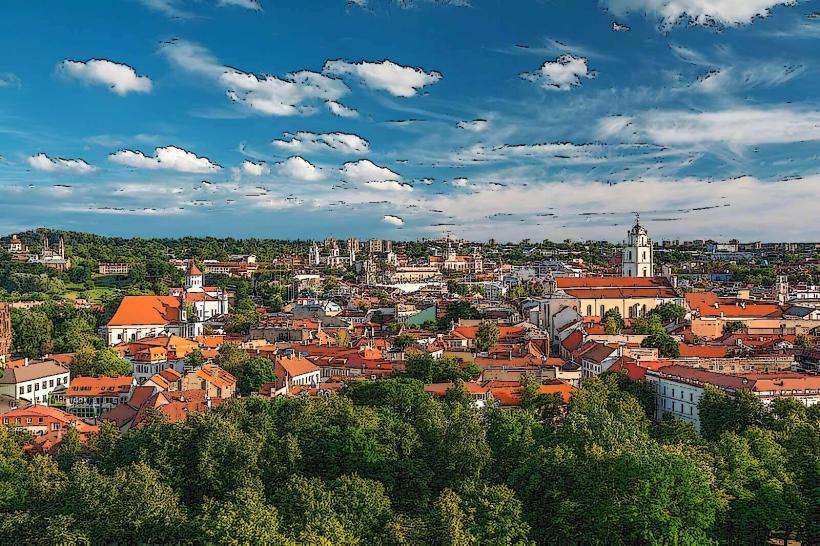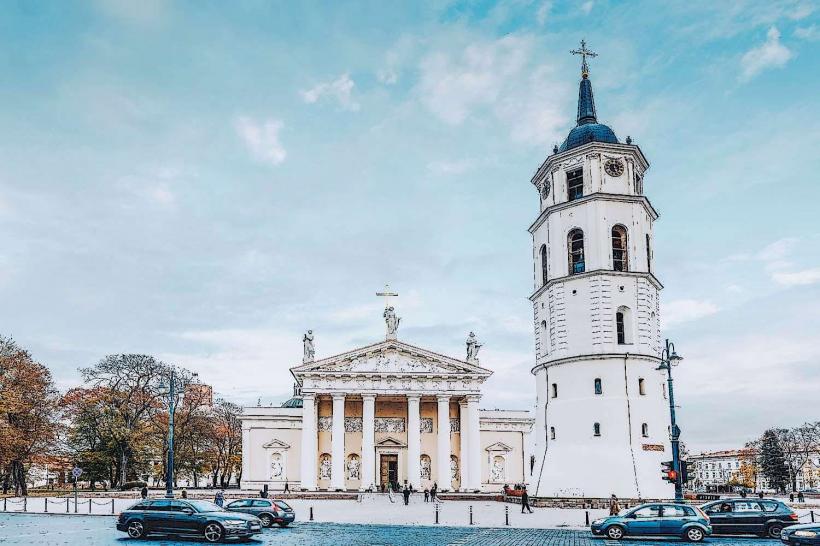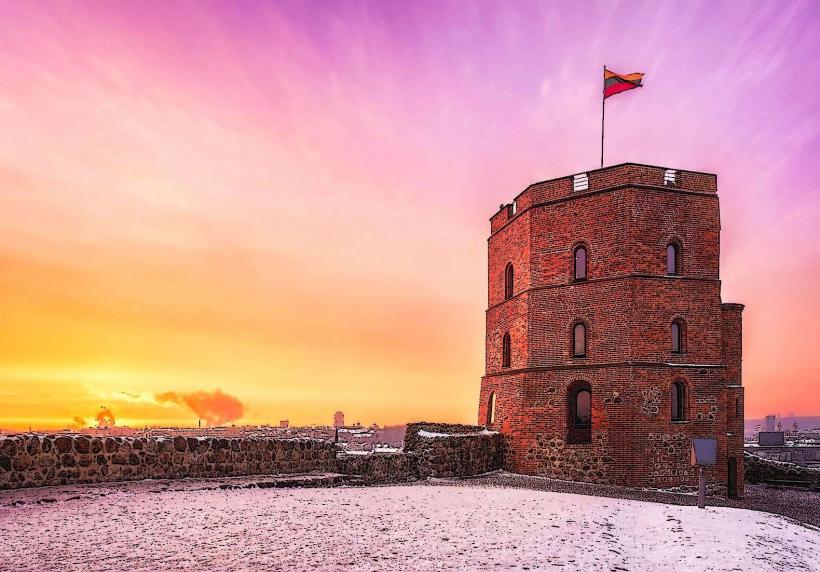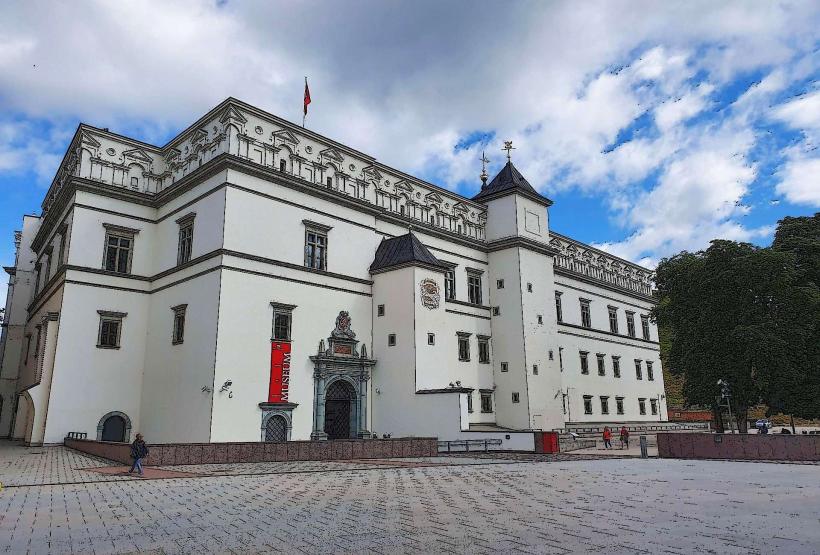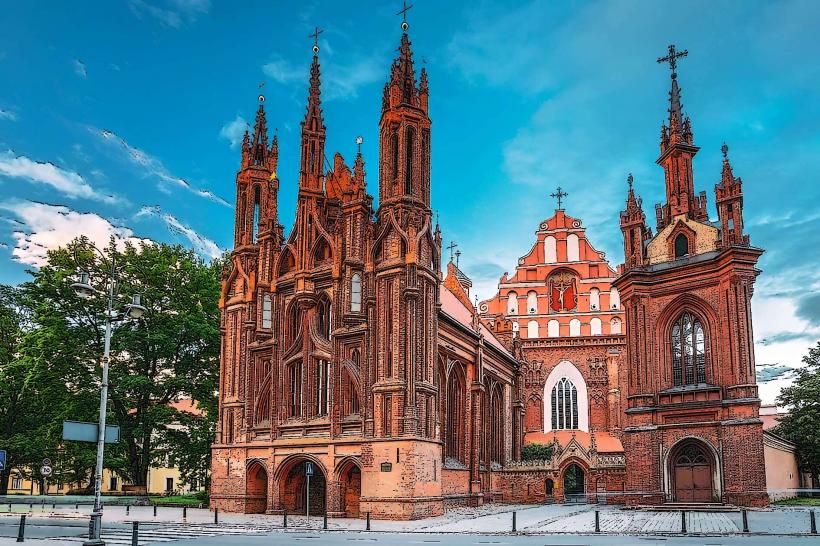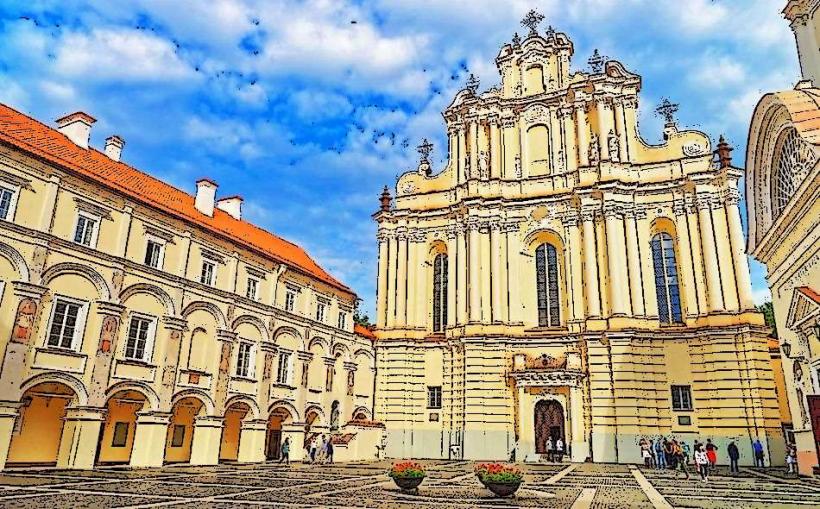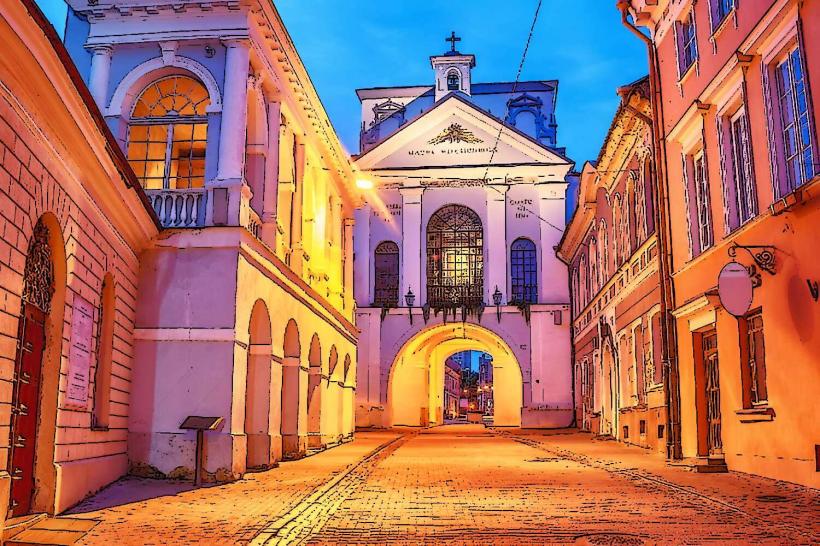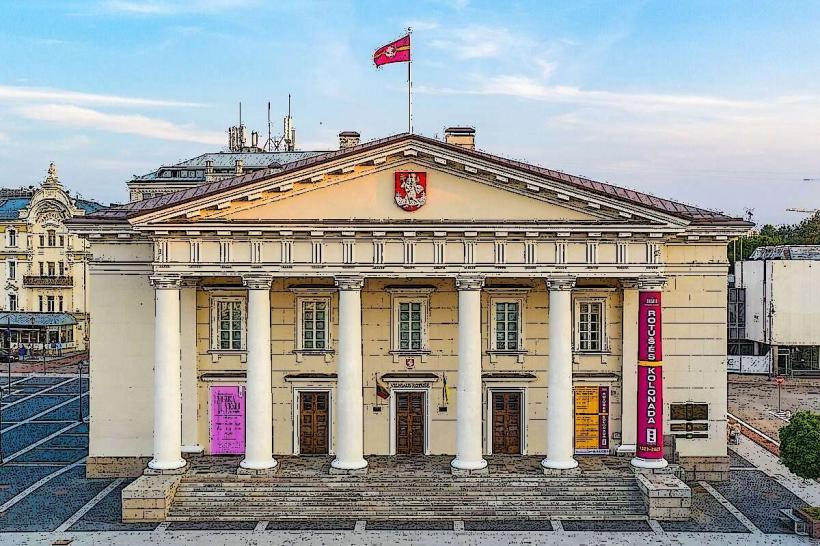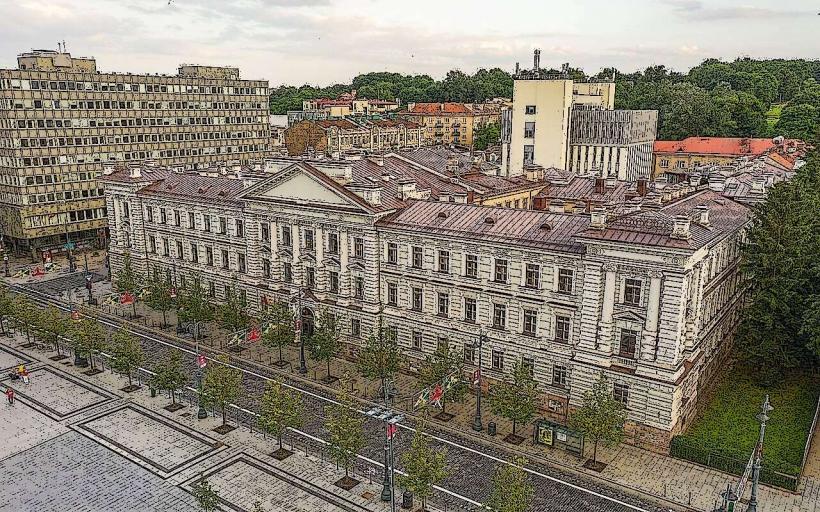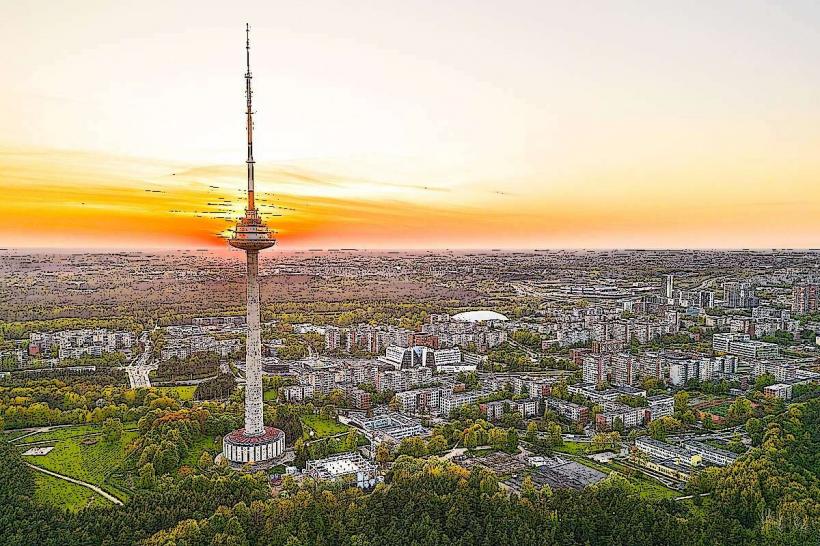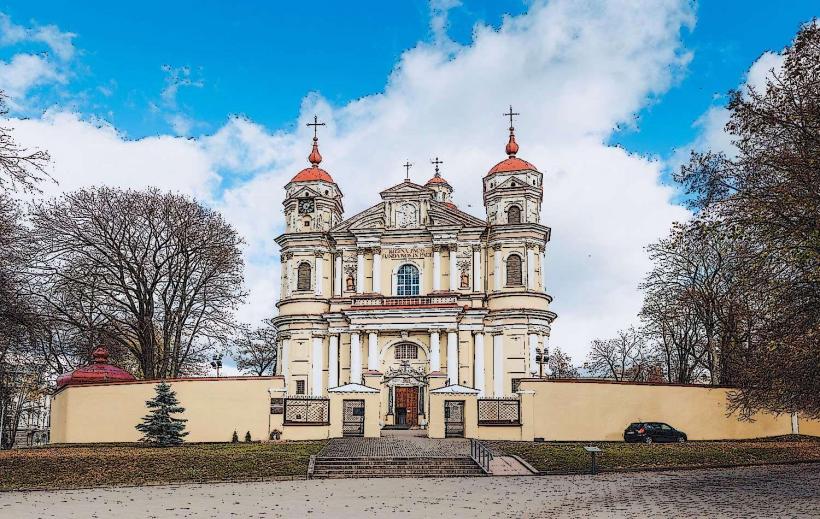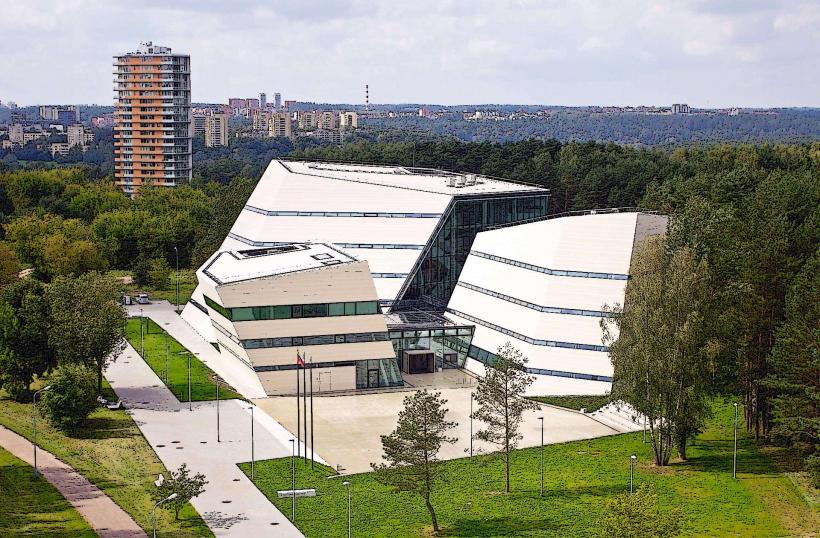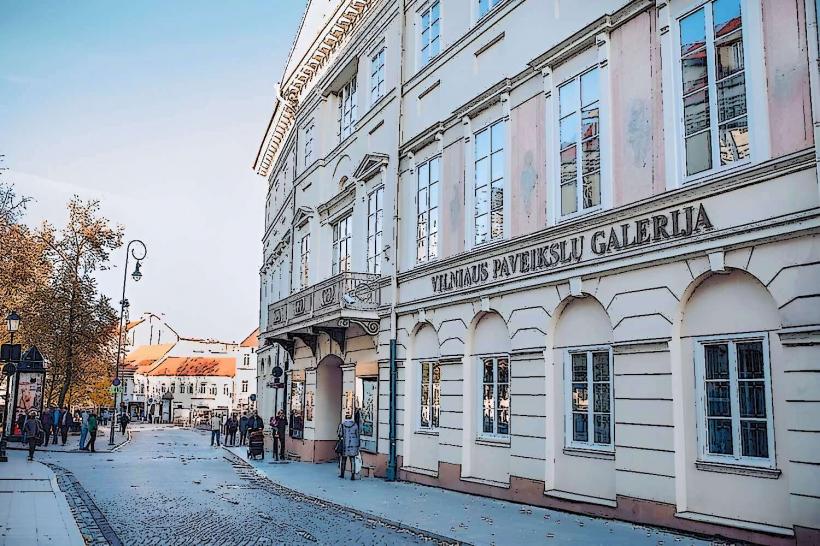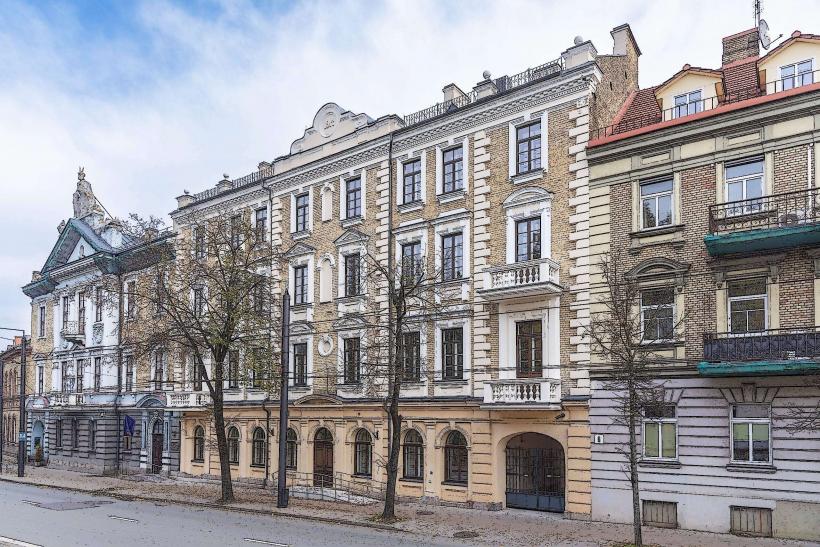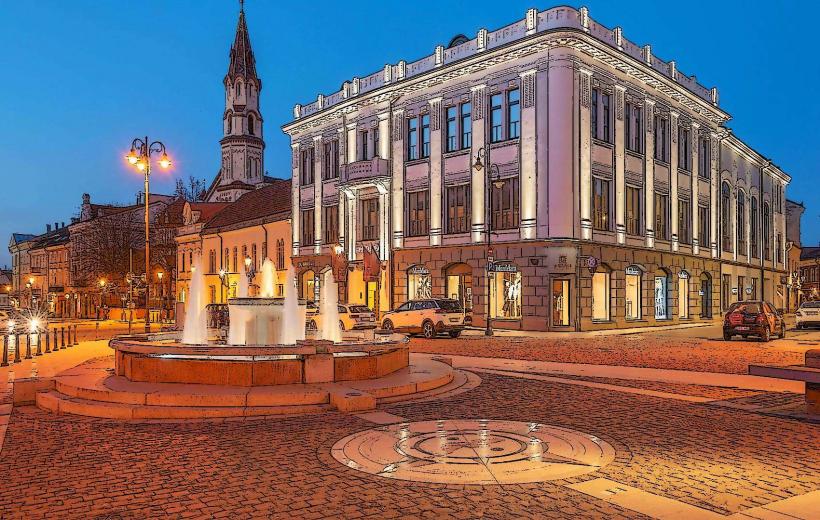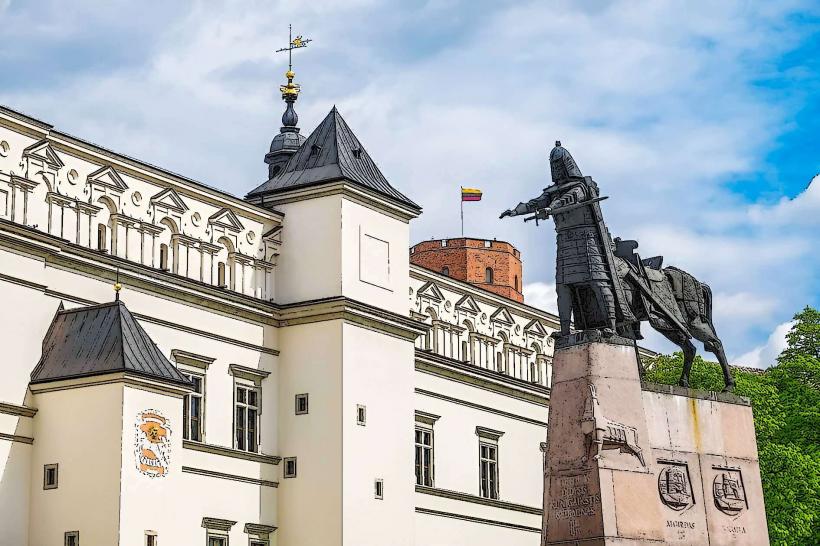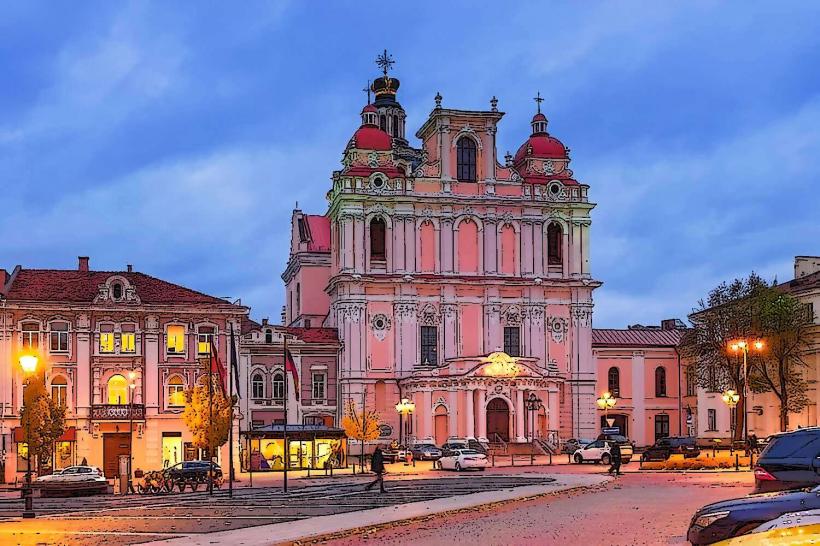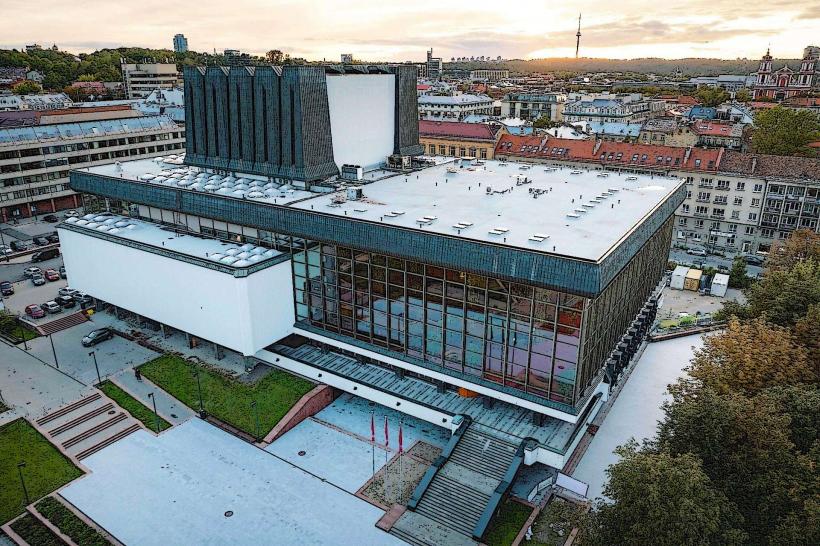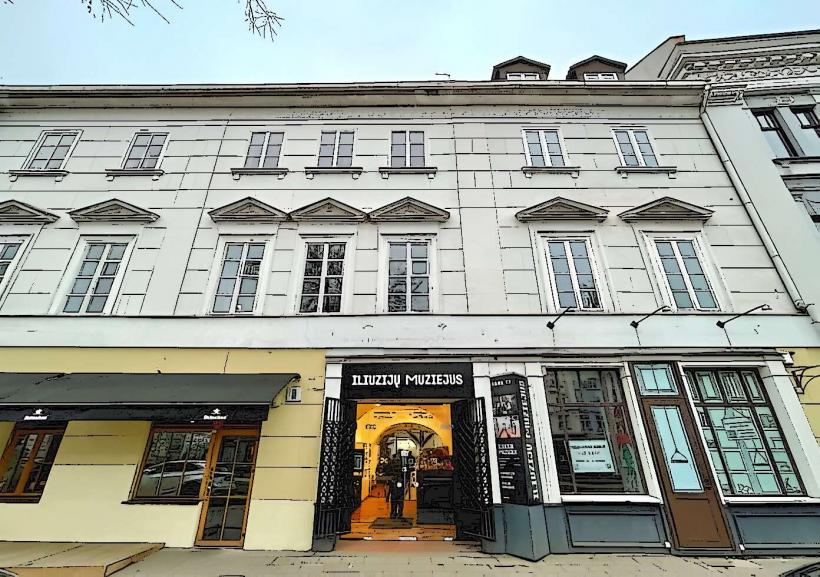Information
Landmark: Three CrossesCity: Vilnius
Country: Lithuania
Continent: Europe
Three Crosses (Trys Kryžiai)
The Three Crosses (Lithuanian: Trys Kryžiai) is one of the most iconic landmarks in Vilnius, offering both a significant historical narrative and breathtaking panoramic views of the city. The monument, located on Castle Hill above the Old Town, holds deep cultural and religious meaning, symbolizing Lithuania's struggle for freedom and the country's enduring spirituality.
Historical Background
The Three Crosses have a profound historical and religious significance, reflecting the country's turbulent past and its connection to Christianity.
Legend and Origins: The exact origins of the Three Crosses are steeped in legend. According to one version, in the 14th century, seven Franciscans or missionaries, who were martyred for their Christian faith by the Pagan Lithuanians, were believed to have been executed at the site where the monument now stands. Over time, the place became known as a sacred site to honor these martyrs.
First Crosses: The first wooden crosses were erected at this location in the 17th century, but the existing stone monument was built much later. In 1770, King Stanisław II Augustus, the last king of Poland and Grand Duke of Lithuania, ordered the construction of a stone monument. The crosses were meant to honor the martyrs who had been executed there.
Soviet Period: During the Soviet occupation of Lithuania, the original monument was destroyed in 1950, as the Soviet authorities sought to suppress religious and national symbols. The Three Crosses were demolished as part of the Soviet effort to erase symbols of Lithuanian identity and Catholicism. However, in 1989, after Lithuania regained its independence from the Soviet Union, the monument was reconstructed as a symbol of national pride and resilience.
Monument Design
The Three Crosses monument today is an imposing and beautiful structure that symbolizes both the martyrdom of the early Christian missionaries and the enduring spirit of the Lithuanian people.
Architectural Style: The monument is designed in a modernist style with minimalist features. It consists of three large white crosses that are erected on a hilltop, standing tall against the backdrop of the Vilnius skyline and the surrounding lush greenery of Park of the Vingis.
Symbolism: The three crosses are said to represent the three martyrs (Franciscan missionaries or monks) who were killed at the site, symbolizing sacrifice, faith, and spirituality. Additionally, the three crosses have become a symbol of Lithuanian national pride, especially after the monument’s reconstruction post-independence. The design reflects the endurance and strength of the Lithuanian people, both in the face of historical oppression and the pursuit of freedom.
Placement: The monument stands at the top of Castle Hill, overlooking Vilnius Old Town. The location is significant not only for its religious symbolism but also for its panoramic views. Visitors can enjoy sweeping vistas of the city and the surrounding landscape, including the Vilnia River, Gediminas Hill, and the Vilnius Cathedral. The spot has become one of the best locations for photos and reflection in the city.
Cultural and Religious Significance
National Symbol: Over time, the Three Crosses monument has come to represent more than just the religious and historical martyrdom of early Christians. It has evolved into a broader national symbol for Lithuania, representing independence, resilience, and unity. The monument is seen as a tribute to the spirit of the Lithuanian people, who have endured centuries of foreign domination and suppression, including the Soviet occupation.
Religious Meaning: The Three Crosses also hold significant religious meaning for the people of Lithuania, who are predominantly Catholic. The monument is often associated with the Catholic faith, representing sacrifice, the martyrdom of saints, and the triumph of faith over adversity. It stands as a reminder of the country’s Christian heritage and the role that faith has played in Lithuania’s history.
Public Celebrations and Events: The Three Crosses is a place of reverence for many, and public ceremonies, especially around national holidays like Statehood Day and Independence Day, often include symbolic visits to the monument. It serves as a place of reflection on Lithuania’s past struggles and its future path.
Visiting the Three Crosses
Location and Accessibility: The Three Crosses are situated on Castle Hill, which is accessible via a walking path from the Old Town. Visitors can hike up the hill to reach the monument or take the Vilnius Funicular Railway, which makes the site more accessible for people of all ages and fitness levels.
Best Time to Visit: The best times to visit the Three Crosses are during the daylight hours when the sunshine illuminates the crosses against the backdrop of the city. Visitors also flock to the site in the evening for stunning sunset views over Vilnius. The panoramic view from the monument is one of the best in the city, offering a scenic vista of the Old Town, Gediminas Hill, and the Vilnia River.
Visitor Experience: As visitors approach the Three Crosses, they are greeted by a peaceful atmosphere that invites quiet reflection. The hilltop is often less crowded than other major tourist sites in Vilnius, providing a more serene experience. There are also informational plaques nearby that explain the history and symbolism of the monument, offering insight into its cultural and national importance.
Conclusion
The Three Crosses is not just a monument; it is a powerful symbol of Lithuania’s history, faith, and national identity. Standing tall over the city, it has witnessed centuries of change and remains a testament to the strength and spirit of the Lithuanian people. Whether you are drawn to its historical significance, its religious symbolism, or its stunning views of Vilnius, the Three Crosses is an essential landmark that provides a deeper connection to the heart of Lithuania.

